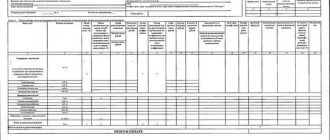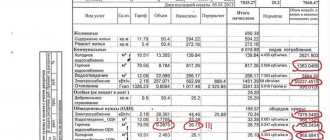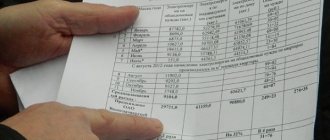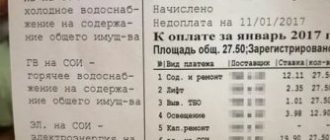Every month you receive receipts for payment for services consumed. They are awarded to a citizen living in a given residential area. They indicate how much we pay for gas, electricity, water, etc. New samples differ in the set of abbreviations, color (for example, in St. Petersburg - a pink payment card, in other regions - yellow), etc. An example of a receipt will be given below. In case of accrual of illegal amounts, which means if two receipts are received, with double size, etc., then it is necessary to complain to the authorized bodies.
Who generates receipts for housing and communal services payments?
There are several aspects to consider when answering this question. Thus, according to the law, in an apartment building, receipts for payment of utility services are sent and generated by management organizations. They are authorized to calculate the consumption of the following housing and communal services:
- for water supply;
- per apartment (depending on the number of persons registered there);
- for major repairs, etc.
Citizens receive separate receipts for gas and electricity supplies. This is due to the fact that these organizations are direct suppliers of utility services, and therefore charge directly.
What does a utility bill look like?
A housing and utility bill looks like this: it is a written document that lists the services for which a fee is charged. Tariffs are also indicated there.
The rent act has the following content:
- Indication of the payer.
- Address and location of residential premises.
- The name of the service provider and its bank details.
- QR code.
- Data on the services provided.
- Tariffs that are applied during calculation.
- Total amount to be paid.
Depending on the management company, the receipt may also include services for garbage removal, sewerage, general house needs, heating, etc.
Description of services
Payer code
Such a concept as a payer code is a certain combination of digital values that are reflected in payment documents. Each code is assigned to a specific payer for housing and communal services individually by the management organization, in accordance with the priority at the place of residence.
You can find such a designation in the first paragraph of the receipt for housing and communal services. As a rule, on a standard receipt the code is written in the upper corner and consists of a value from 8 to 10 digits. Each specific owner of the premises is assigned his own individual code, which serves as a so-called password or passport when paying for housing and communal services.
Important! Sometimes the code may change. As a rule, this is due to internal changes in the structure of the management company or housing office. This occurs in a situation where an apartment building passes from the management of one company to the management of another.
The management organization must notify residents that their individual codes will be changed.
What is SOI?
SOI stands for maintenance of common property. This new expense line only recently appeared. Previously it was called ONE. But today changes have been introduced that have affected the name of costs and expenses.
According to the new calculation rules, the methodology itself changes. This means that each owner of a residential property will contribute money only for his own consumed service, and will not pay for his neighbor.
The point of this change is to get rid of the need for respectable citizens to pay for non-payers. SOI includes standards for the consumption of utility resources. This includes the amount of utility resources that are necessary to ensure proper maintenance of the premises.
What does "set" mean? maintenance service for VDGO and VKGO?
VDGO is an intragas equipment that is located in every residential premises. These include gas pipelines, other sources of gas supply, and gas distribution networks.
There is also indoor gas equipment, which we are used to seeing in the form of boilers or stoves. Utilities are charged for maintenance and repair, diagnostics, equipment replacement, and dispatch support.
Water disposal
What is drainage? Calculation of the amount of resource consumption should be carried out using installed metering devices. If for some reason you do not have such metering devices, the amount of resources consumed will be determined as an average according to consumption standards.
In order to calculate the amount to pay, you need to multiply the amount of water in accordance with the meter readings by the existing tariff.
It is necessary to carry out this action with the consumption of cold and hot water. After that, add the resulting indicators and get the sum.
Domestic hot water supply on one unit - what is this name?
DHW at one-unit service station means hot water supply multiplied by general house needs. By combining such concepts, you will get a line of expenses that is due for hot water supply produced for general house needs.
Paying for such needs is not a whim of the employees of your management organization, but your direct responsibility, which is enshrined in law.
Hot water supply for the needs of an apartment building is needed for:
- pressure testing of the heating system;
- heating of the entrance;
- technological irrigation;
- also for the discharge of water in the riser.
Balance
Despite the fact that the balance is most often used in accounting in housing and communal services, it also has its place. The designation of balance is account balances. The balance at the beginning of the previous month is the money that you have taken out in excess of the required amount and will now carry over to the next payment.
There is the concept of the opening balance of the current month, which means the amount that was in your account at the beginning of the month. As a rule, the receipt number is immediately indicated in column number 3.
The correct balance should always be zero. It can also be positive and negative.
Hiring
The receipt for payment of utilities includes payment for rent and for the rental of municipal housing. If you have entered into a social rental agreement, then according to the housing and communal services receipt you must pay money to the municipal authority. The amount is fixed and must correspond to that specified in the social tenancy agreement.
Recalculation
The reason for the recalculation of the housing and communal services receipt is the confusion that occurred when calculating funds for housing and communal services, for calculating amounts for persons who do not have meters, as well as due to an operator error.
Recalculation can be carried out after filing a claim or independently. Recalculation is provided for garbage removal, water supply, sewerage, and gas disposal.
But for heating and housing and communal services, recalculation is not provided, because they are provided in a certain volume.
AUR
Administrative and management expenses are incurred by the management organization as part of the maintenance of the apartment building. This concept includes expenses for wages to employees of the organization, payment for account maintenance, office expenses, and so on.
Target contribution
Even if you are not a member of the housing cooperative, you must pay targeted contributions. In accordance with Article 249 of the Housing Code, the costs of maintaining the property fall on the shoulders of the owners. Each participant is obliged to participate in the procedure for paying taxes and fees in proportion to their share, as well as pay the costs of maintaining the premises in proper condition.
PD number
Receipts have a specific form under the PD number, which was approved by a letter from the Ministry of Finance and Sberbank dated March 12, 2007. This example of filling out a payment document is most welcomed by tax services, as well as resource companies and management organizations
DHW cold water component
What does the concept of “DHW component cold water” mean? DHW with a cold water component is used to supply hot water to apartments and for general household needs. This line is required on receipts and is a definite innovation.
MSW
On January 1, 2021, the term “solid utilities” appeared. It is reflected in Article 154.
This service is provided by the regional operator together with the management organization. This is the responsibility for maintaining waste sites, promptly removing it, and maintaining the territory in accordance with sanitary and hygienic standards.
This appears on a separate line on the receipt. Payment is distributed according to the number of people registered in the premises. And the price depends on whether separate or general collection is organized in the house.
Drains
Wastewater treatment is an activity that is provided to maintain sanitary and hygienic conditions in a home.
The responsibility to pay for such a procedure lies on the shoulders of the residents. Cleaning is carried out as needed or once a year.
Garbage removal
Since 2021, the receipt has added such a type of service as household waste removal. It is carried out daily. The amount to be paid is provided once a month. Garbage removal is necessary to maintain sanitary standards of the territory.
ROM
The ROM is the communication device board. It is an intercom.
The intercom is maintained by a special organization, for whose services you need to pay. Typically, payments are calculated either annually or monthly.
If you think that the payment is too high, you can call the company that provides the service and clarify the situation.
Heating of the main area
Payment for heating can be made during the heating season or spread over 12 months. The payment is influenced by the total area of the apartment, the amount of standards consumed, as well as the tariff. The amount of heating is determined by multiplying the standard by the area of the apartment and the tariff.
Housing and communal services and housing and communal services - what are they and what is the difference
Before you understand the difference between these concepts, you need to understand the meaning of this abbreviation.
Housing and communal services is understood as housing and communal services as a branch of the economy engaged in the study and formation of a range of services necessary for the normal life support of the population.
Housing and communal services are housing and communal services, that is, a specific resource provided to citizens - electricity, hot water, etc.
The concept of housing and communal services is much broader than the concept of housing and communal services, and includes, in addition to the list of services, other essential provisions, legal norms, standards, etc.
What is “maintenance of residential premises” in a housing and communal services receipt?
This concept includes a list of services that the housing office undertakes to provide to owners. The list includes the following mandatory work:
- regular inspection of structures and yard areas to detect problems;
- maintenance and timely repair of elevator rooms and equipment;
- garbage collection;
- household waste disposal;
- current and major repairs of the building.
In addition to the listed services, the service organization, by mutual agreement of the parties, may undertake additional work, for example:
- protection of the territory;
- concierge;
- implementation of planned deratization;
- sanitary treatment of utility blocks and common areas.
Reference! All services, including those that are not mandatory but are performed by housing and communal services, must be taken into account in the agreement between the supplier and the consumer. In addition, the payment document must be divided into types of work - the amount is indicated for each service separately. It is illegal to include in it those obligations that were not fulfilled during this period. Tariffs are allowed to be changed only once every 12 months. This right is vested in the municipal authorities of the region and the apartment owners themselves.
Legal regulation
In the housing and communal services sector, legal regulation includes such legal acts as:
- Constitution of the Russian Federation.
- Housing Code.
- Law on Privatization.
- Government decree in the housing and communal services sector.
- Private contracts.
- Regional legal acts.
It is in these legal documents that tariffs for utility services, the procedure for their payment, the procedure for repaying debt obligations, etc. are reflected.
As a rule, regulation most often occurs at the regional level, so special attention should be paid to the regulatory legal acts of the constituent entity of the Russian Federation.
Explanation of abbreviations on the receipt
A utility bill includes a lot of abbreviations that need to be deciphered and understood. Each abbreviation is designated by a set of letters and has its own name. Let's look at some of them.
SEON
This is a rather specific column in utility bills. SEON stands for unified public information system. As a rule, this includes sending messages to citizens about impending natural disasters, etc.
SOI
This is one of the most common columns in a payment order. It stands for the phrase “maintenance of common property.” It obliges citizens to pay mandatory expenses for the needs of common property in the house. SOI includes:
- maintenance of stairs;
- entrances;
- elevators;
- attic, etc.
The amount of payment for SOI is determined by an agreement between residents and the management company.
ROM
This payment applies only to those houses where an intercom is installed. The abbreviation stands for: “ intercom-locking device ”. In some cases, the fee for ROM is issued as a separate receipt.
Citizens are required to pay for its maintenance and maintenance of normal technical condition.
ONE
General house needs are an analogue of SOI . These are also expenses for the maintenance of common property. There are no differences in these abbreviations; it all depends on what set of letters the management organization uses to indicate these expenses in the payment slip.
UUTE
UUTE in the receipt is responsible for the provision of thermal energy to apartments. It reflects how many resources were supplied and at what tariffs the payment is calculated. The inclusion of UTE occurs depending on the season. Explanation of the abbreviation: thermal energy metering units.
DSCPT
Stands for “additional cable program television systems.” This column is not available on payment cards in all regions. It constitutes a fee for the provision of telecommunication services, maintenance of a common house antenna, etc.
DSKPT can be appealed by a citizen in a situation where he uses cable TV and an antenna.
POVK
In order to understand what POVK means, you need to refer to the norms of housing legislation. This is an additional fee for providing heat to the apartment. A couple more letters are added to this abbreviation, for example, ТХВ.
APPP
APPP involves citizens paying for the development and maintenance of systems that protect the house from sudden fire. Such systems do not protect the apartment itself, but entrances, stairs, attics, etc.
AUR
AUR is also a specific line of expenses in payments. This includes a set of payments aimed at ensuring the work of the administrative and management apparatus, for example, a management company.
OPU
OPU includes the volume and types of costs for the collection, repair and installation of various metering devices, such as water or gas meters.
ELDT
This is the “daily consumption on the electric meter”. As a rule, such consumption is not indicated in all regions. The night consumption of the EBDT can also be indicated in a separate line.
TPP
TPP includes payment for water - “coolant”.
VDGO
The interpretation of this concept includes the provision and maintenance of gas equipment on the territory of the house (but not the apartment). VDGO includes pipes, valves and other in-house equipment for gas workers. Citizens are required to pay for inspection, repair and maintenance of these items.
PD number
This is the payment document number! It is used by housing and communal services management companies, and it is also convenient for the tax inspectorate and other organizations.
Water disposal in housing and communal services receipt
Citizens are also required to pay for wastewater disposal. Payment for this is charged every month. The management company issues such a receipt and also issues an invoice for the allocation.
Water supply
DHW and cold water are indicated in a separate column. This is, in essence, the supply of hot and cold water to the apartment. This is done through common pipes.
DHW
DHW refers to the provision of hot water supply. The column must be filled out in accordance with legal requirements. There is no charge for the consumption of hot water in situations where there is a hot water heater at home.
HVS
This is the supply of cold water to the apartment. Payments are collected based on common metering devices (shared in the building) or on individual ones located in the apartment. The calculation is generated for a certain period.
Heating
Abbreviations for heating have already been discussed above. It should be noted that the provision of this service is seasonal and, for example, in the summer, no payment for heat is charged.
What is included in the maintenance and current repairs of housing in 2021
The column “general household needs” appeared in payment documentation in 2017. This category includes all costs incurred by users for the consumption of resources, namely water and electricity. This means that the ODN category will include expenses for evening lighting of staircase landings in apartment buildings, watering lawns and flower beds, etc.
All apartment buildings require regular attention and timely repairs. These include:
- preventing foundation destruction;
- roofing and facade works;
- water supply maintenance (leaks, troubleshooting)
- replacement and repair of interior decoration;
- cleaning and disinfection of garbage chutes;
- necessary monitoring of the performance of heating, sewerage, ventilation and water supply systems;
- measures for improvement of adjacent territories, repair of roads and pedestrian sidewalks.
These are measures taken by the management company to create normal microclimatic conditions in the house, as well as to prevent problems with the start and end of the heating season.
It must be indicated that the range of work performed within this area should include:
- checking heating systems, timely repair operations;
- quality control of ventilation units;
- checking the integrity of window glass.
The concept of excess area indicates that the user has an excess of square meters according to the law . Consequently, the dwelling has a larger area than required by established state standards and regulations.
The designated concept is used to set a fair rate for users.
To determine the rate, they are guided by the approved standards. The calculator takes into account the following parameters:
- for one person -33 sq. meters;
- for two residents – 42 square meters;
- for three or more – 18 square meters per person.
This is the norm that is used for calculations, but it must be remembered that the minimum indicator increases depending on the decision of local authorities.
So, for residents of Moscow and the Moscow region, an additional 7 square meters are added. In addition, additional relaxations apply to a number of users.
No you can not. This responsibility is assigned to the owners of the premises of an apartment building in Art. 158 Housing Code of the Russian Federation.
These costs can be reduced by eliminating certain types of services at the general meeting. The refusal of residents must be agreed upon with authorized representatives of the management company or HOA.
As a rule, owners refuse services related to a specific entrance. For example, you can refuse to clean staircases. However, then residents must agree to do the cleaning themselves.
If you encounter any difficulties or identify unlawful charges, please contact a lawyer for advice. You can get free legal assistance on our website. Enter your question in the special window.
If the quality of work or services is inadequate, you should contact the management company with a request to reduce the established tariff. If the complaint does not help, in the future you should contact Rospotrebnadzor, and then go to court.
- All news
- Kirovsky district
The basic tariff rate is discussed with residents and agreed upon at a general meeting in the presence of the management company. By law, tariff changes are allowed no more than once a year. If we are talking about buildings that are state or municipal property, then the owners of such real estate, in addition to mandatory transfers for routine maintenance of the building and its planned repairs, additionally pay for the housing itself - on the basis of a social tenancy agreement. In other words, the apartment is rented from the state, and the citizens living there are not its full owners.
It is quite possible to make such calculations yourself - this is a good way to check the integrity of the management organization.
The following calculation options are available:
- using formulas - they must be prescribed in the charter of the management company. Additionally, this information can be found in the primary source - Government Decree No. 354;
- submit a personal request to the settlement department of the institution that issues receipts for payment.
To use the formulas, you will need to have the following data:
- total area of the apartment;
- area of non-residential rooms;
- number of floors in the building;
- lifespan of the house;
- total area of non-residential premises in a high-rise building;
- type of communication.
Depending on the technical equipment of the house, other parameters may be required. They are on the official Internet pages of the Housing and Communal Services.
Rules for reducing rent
In this matter, the following points need to be taken into account:
- You can reduce the fee when providing low-quality services.
- In the absence of necessary maintenance of metering devices.
- With illegally inflated fees.
- In situations where the fee exceeds 20 percent of total income.
Only in these situations can you really count on a reduction in utility bills. Everything happens exclusively at the written request of the person, since the reduction is exclusively of a declarative nature.
Thus, the receipt includes many alphabetic symbols and codes: IPU, IND, ZPU, ADS, AZU, AKHN, BULA, VIC, ASPZ, AHR, IKU, OID, SOID, GUP, etc. Essentially, this is one and the same same name for different utilities. For example, OID and SOID apply to the general property of MKD, IPU and IND - mean payment for metering devices, ZPU and ADS - also to metering devices in terms of sealing.










